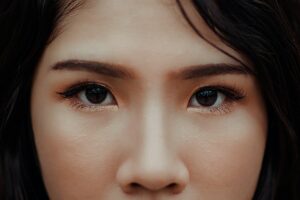Local Optometrist Explains Contact Lens Options

Anyone who’s looking for vision correction will find contact lenses an excellent choice, especially if you don’t enjoy wearing eyeglasses all the time or don’t want to undergo LASIK surgery. Recent innovations have resulted in improved technologies in lenses and expanded the range of options available. The two major types of contact lenses are soft and hard, and each has a range of subcategories. These subcategories are based on the material used to make the lens and how long the lens can be worn among other things. Below are different types of contact lenses as revealed by optometrists. You can also get additional information when you visit greenlakeeyecare.com/.
- Hard Contact Lenses
These are mostly rigid gas permeable lenses made from plastic and other materials. They maintain a firm shape whilst allowing oxygen to pass through to the eye. If you have eye conditions like astigmatism and keratoconus, you’ll find RGP lenses very helpful because they tend to provide sharper vision than soft lenses in a situation where the wearer has unevenly curved cornea. If you have allergies or seemingly get protein deposits on your contacts then you should consider RGP lenses.
- Soft Contact Lenses
Many people like to wear soft contact lenses and optometrists may encourage you to wear them after assessing your eye problem and determining that they are the best choice. However, there are various forms of soft contact lenses and they tend to be more comfortable than hard contact lenses. Here are some that your optometrist is likely to recommend.
- i) Daily wear contacts. These are very common among those who are avoiding eye contact infections. They are worn in the morning after waking up and removed at night when going to bed. They are disposable and you need to wear a new pair each day. However, you can also choose weekly or monthly wear contacts to be replaced weekly or monthly, respectively. Regardless, disposable daily wear contacts are ideal for those who want to wear contacts once in a while.
- ii) Extended wear contacts. These can be worn while sleeping but need to be removed weekly for cleaning. Fewer optometrists recommend them because they increase your chance of contracting a serious eye infection.
iii) Colored (tinted) contacts. Contact lenses can also be tinted to alter the color of the eye and correct vision at the same time.
- iv) Toric contacts. These are useful if you have astigmatism although they may not be as effective as hard contact lenses. They can be daily or extended wear and tend to cost more than most other variations of soft contact lenses.
- v) Decorative (cosmetic) contacts. While these lenses may change how your eye looks, they do not correct your vision. Some are contacts and lenses that can make your eyes look like specific characters in movies, including vampires and animals. While they may not correct your vision, you still need a prescription to wear them. You also need to treat them like prescription contacts if you want to avoid serious eye infections.
Optometrists reveal that these are some of the contact lenses that people may use to correct their vision. You should always consult your eye doctor to recommend the best vision-correction eye contacts for you. You should also take good care of them and clean them properly to avoid serious eye infections.






